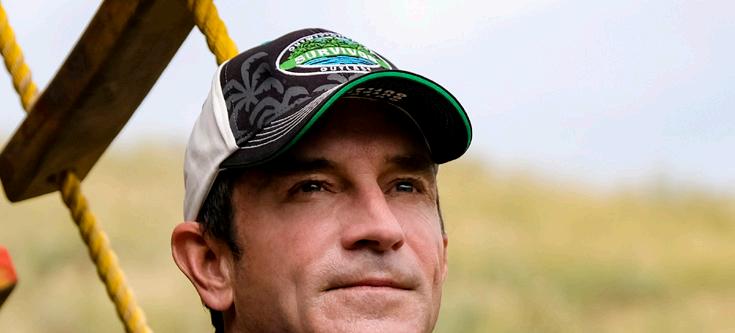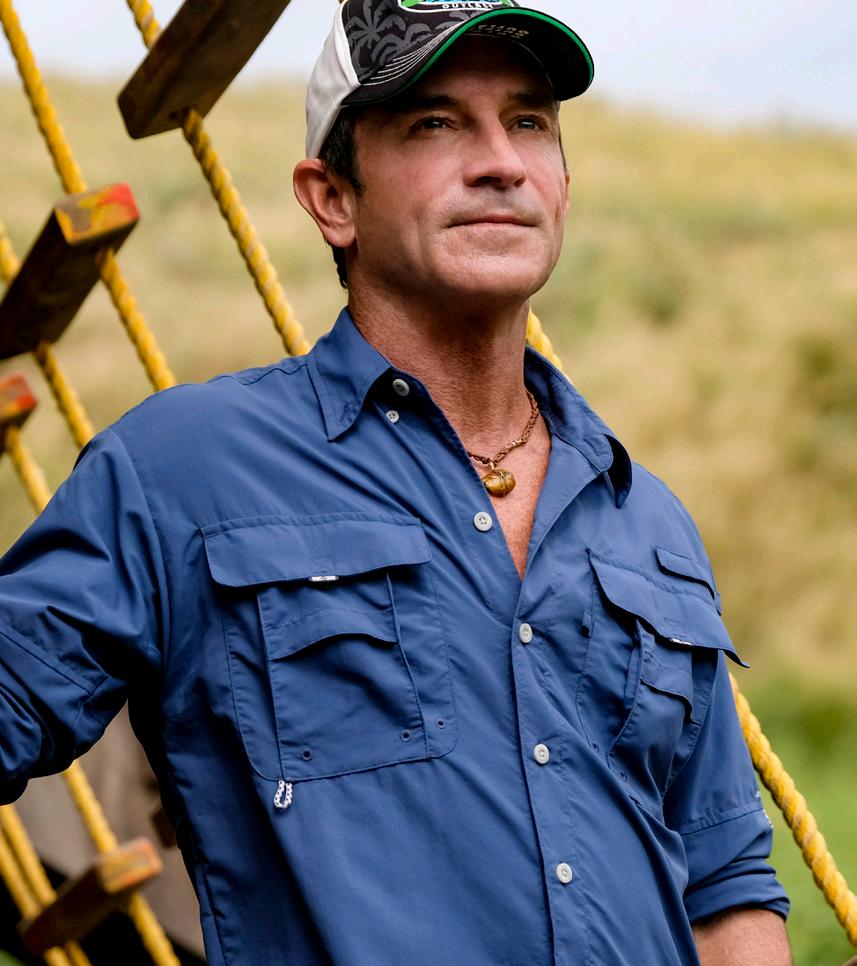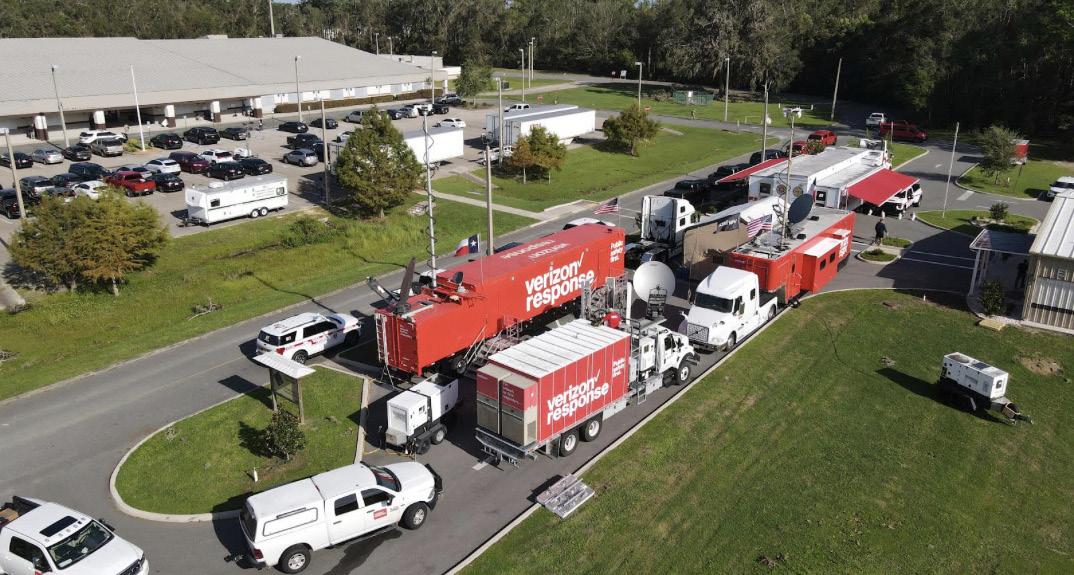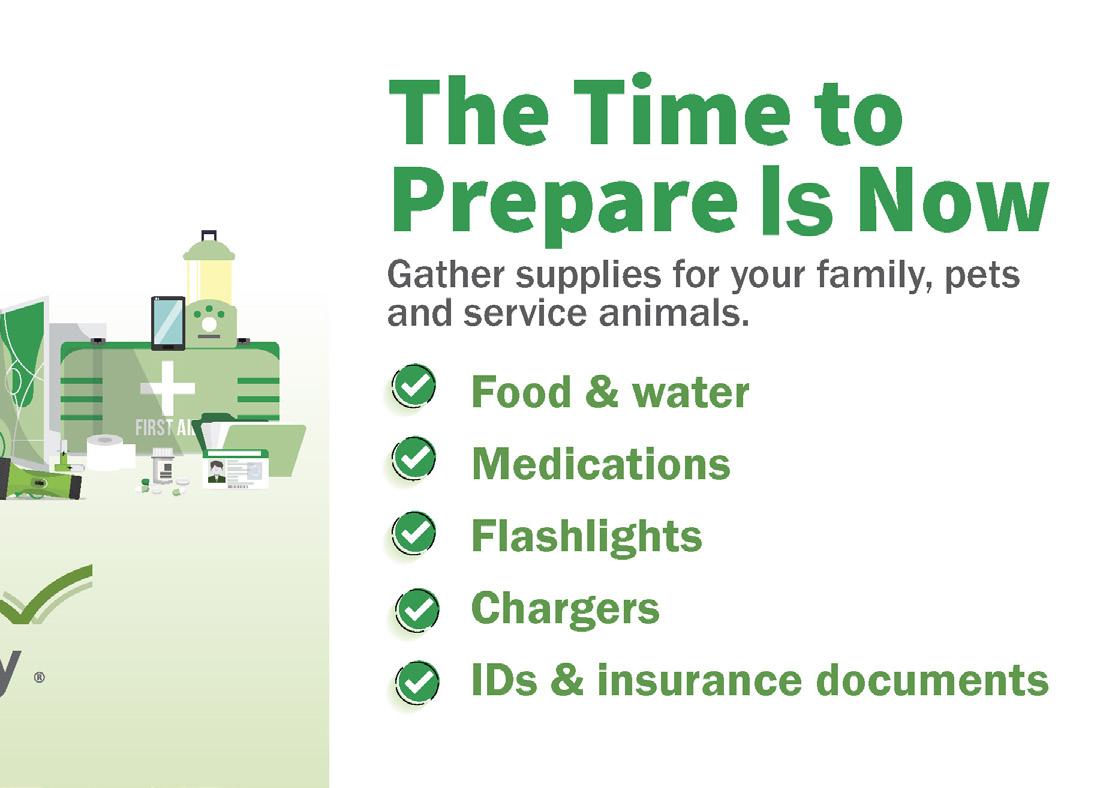Disaster Preparedness
August 2024 | www.impactingourfuture.com


August 2024 | www.impactingourfuture.com

The Federal Alliance for Safe Homes (FLASH) offers three steps that families can follow to prepare for hurricanes as part of their #HurricaneStrong program.
1. Safety: Know your evacuation zone
This step helps you answer the question, “Where will we go to weather the storm?” Suppose you are not in a storm surge zone. In that case, you may be able to safely hunker down at home if you have suitable protective devices like shutters or if you make emergency preparations like boarding up windows and doors.
2. Preparedness: Make a plan, build a kit
Once you know where you will take shelter during the storm, it is vital to make a plan and practice it so you can stay informed and communicate with family and friends. Having a weather radio with battery backup and using smartphone apps with alerting capabilities is essential. You should also build and maintain a disaster supply kit with adequate nonperishable food, water, medicines, pet supplies, and other essentials.
3. Resilience: Strengthen your home
Homeowners have many affordable DIY options to help their homes withstand hurricanes’ strong winds and rain. Analysis by the National Institute of Standards and Technology tells us that keeping your garage door in place is critical to preventing roof and wall damage. The second focus area for home protection is your roof. Some DIY strategies include adding a ¼” bead premium adhesive inside the attic along the joints where the underside of the decking meets the roof trusses. Engineering tests indicate that this affordable method can increase roof uplift resistance by a factor of three.
Visit HurricaneStrong.org to learn about all five steps today and access the complete inventory.
Written by The Federal Alliance for Safe Homes (FLASH)
As families across the country cope with increasingly extreme weather due to the climate crisis, preparing for the next disaster in your community is more important than ever.
One of the nation’s leaders in disaster relief, the American Red Cross, now responds to nearly twice as many large disasters across the country as it did a decade ago. How prepared are you and your family for the next disaster? Now is the time to get ready. Here are a few easy ways to start.
Gather critical supplies
Two of the most important items you can keep in your home are your “go kit” and your stay-at-home kit. Each kit should have the essentials like food, water, and medicine. However, keep in mind that every kit will be unique to you and your family’s needs.
Imagine being told you must evacuate with only a few moments’ notice. Your go kit should include three days of supplies that you can carry with you. You will want to make sure to include backup batteries and chargers for your devices, like your cell phone, CPAP equipment, or a wheelchair. If you have pets, include leashes, carriers, food, water, bowls, litter, litterbox, and photos of you with your pet in case you are separated.
During a disaster, you may need to shelter in place for several days. The Red Cross recommends your stay-at-home kit has two weeks of food and water, and a one-month supply of medication and medical supplies. You’ll want to keep personal, financial, and medical records safe and easy to access (whether it be hard copies or digital backups).
Some disasters, like floods and fires, can happen anywhere, while others are more common in certain areas. Contact your local office of emergency management
to learn what hazards may affect your community.
If you need to evacuate, think about where you will go, how you will get there, where you will stay, and what you will take with you. Plan well in advance if you need help leaving or have to use public transportation.
Have a plan for what you should do if you get separated from loved ones or if the phone and internet lines are down. Write important phone numbers on a contact card and carry it with you.
Plan to stay informed by monitoring local weather and news reports even if the power goes out. Have a backup battery or another way to charge your cell phone, and a battery-powered or hand-crank radio.
Just like you, the Red Cross has a plan in place and is always ready to respond, because emergencies are more common than you might think. In fact, the Red Cross responds to a disaster every eight minutes.
Long before disasters happen, the Red Cross works with local organizations to identify potential shelter locations such as churches, schools, and recreation centers that can be opened within a few hours of a disaster if needed. Responding to disasters is a team effort. To help provide the comfort and care the Red Cross is known for, thousands of responders — more than 90% of whom are volunteers — are trained to help disaster victims during their time of need.
If you are just getting started on your preparedness journey, download the free Red Cross Emergency app for real-time weather alerts, open shelter locations, and expert advice in both English and Spanish.
Written by American Red Cross
Publisher Alexandra Miller Managing Director Gretchen Pancak Production Manager Dustin Brennan Creative Director Kylie Armishaw Client Success Manager Taylor Daniels Copy Editor Taylor Rice Cover Photo by Robert Voets, CBS All photos are credited to Getty Images unless otherwise specified. This section was created by Mediaplanet and did not involve USA Today.
A deluge of floodwaters engulfing a single mother’s home. Wildfire flames emblazoning an elderly couple’s abode. Stories like these are all too common — and they have become more so in recent years.
Social service organizations like The Salvation Army — which has about 6,400 service centers nationwide and serves more than 27 million people year-round — are seeing immense need before, during, and after natural disasters. As a result, the organization has honed a 360-degree approach and ramped up resourcing to help communities prepare for — and recover from — these devastating events, as it’s done since the 1900 Galveston hurricane.
“To accommodate the needs of those impacted by the ever-increasing number of disasters, The Salvation Army has enhanced its training programs, improving upon its comprehensive disaster preparedness and response modules,” said Commissioner Kenneth Hodder, national commander of The Salvation Army. “We’ve refined our specialized training for volunteers and staff on how to handle specific types of disasters, including hurricanes, wildfires, and floods. Over the course of the last year, more than 3,000 staff and volunteers have been trained across the country. Additionally, we have increased our focus on meeting needs that may not be visible, ensuring our teams are equipped to provide emotional and spiritual aid to survivors and first responders.”
The Salvation Army has also bolstered its technological capabilities in recent years, leveraging the communication system Starlink to ease coordination and reduce response times when needs emerge, Hodder explained.
Preparing for a disaster Although help exists, communities
and individuals can also take proactive steps to help ensure their health and safety in the face of natural disasters.
“All communities should have an emergency plan in place, including evacuation routes, communication strategies, and a list of essential items to take with them,” Hodder said. “It’s crucial to stay informed through reliable sources and heed warnings from authorities. Preparing an emergency kit with food, water, medications, and important documents can be lifesaving.”
Another way individuals can help their communities prepare for a natural disaster is by donating to the organization or joining the nearly 1.4 million volunteers currently helping to deploy these services.
“Every contribution, whether time or resources, helps us continue our mission of providing compassionate service to those in need,” Hodder said.
The Salvation Army’s mission (to preach the gospel of Jesus Christ and to meet human need in His name without discrimination) is foundational to their holistic disaster response approach of providing physical, emotional and spiritual needs to survivors.
In the case of the aforementioned single mom, The Salvation Army stepped in to offer temporary shelter, essential supplies, and emotional and spiritual support. The organization then assisted her in finding a new home and provided financial aid, Hodder said.
For the elderly couple, The Salvation Army provided temporary housing, food, and clothing. “Our volunteers worked with them through the

recovery process, helping them navigate insurance claims and connecting them with community resources for rebuilding their lives,” Hodder said.
These are only two examples of the over 400,000 people aided by The Salvation Army’s Emergency Disaster Services in 2023 alone.
“Our goal is to assist individuals and families through every phase of recovery,” he added. “We not only address the immediate needs of survivors in the form of meals, hydration, shelter, clean-up kits, emotional and spiritual care, infant supplies, and clothing, but also offer long-term support in the form of case management, financial aid, transitional housing, and job training to help them rebuild their lives. Our commitment to serving the whole person for as long as they need us sets us apart, ensuring we address the comprehensive needs of those affected,” Hodder said.
Knowing it takes a wide network to provide end-to-end services, The Salvation Army has formed partnerships with local governments, businesses, and nonprofits, and has secured supplies at key locations to expedite their deployment.
To get help, people can call their local Salvation Army office or emergency hotlines. Mobile units often provide support to affected communities, too, and The Salvation Army’s website offers further details on available services and how to obtain them.
Written by Melinda Carter

To learn more, donate, or volunteer, visit salvationarmyusa.org
A preparedness expert offers tips to help you stay safe as climate change increases the frequency and severity of extreme heat and hurricanes.
Experts predict this summer could be one of the hottest on record, putting the health of older adults, young children, pregnant individuals, and those with certain chronic health conditions at risk. At the same time, the National Oceanic and Atmospheric Administration is forecasting one of the most active Atlantic hurricane seasons in years with up to 25 named storms, including four to seven major hurricanes.
To ensure you’re prepared for any potential extreme weather or natural disasters in your area, start by making an emergency kit. Having a kit with enough food and water for your family and pets for at least three days, along with copies of important documents, is key.
Plan for communications challenges. Identify a primary and secondary meet-up spot in case you get separated from your family. Phone calls may not work; text messages will be more likely to go through. If you have Wi-Fi, consider posting on social media to let others know you’re safe, and have an out-of-state contact that you and your loved ones can text to facilitate the flow of information.
The steps you take now can help protect you and your loved ones from extreme weather distruptions. Learn more at americares.org/climate

After 24 years and 46 seasons, Jeff Probst and the “Survivor” crew know what it takes to create a comprehensive disaster preparedness plan in the remote reaches of the Pacific — and at home.
How important is it during the production of “Survivor” to be prepared for potential natural disasters, and what precautions does your team take to ensure the safety of the castaways and crew?
Being prepared for potential natural disasters is one of the most important components to consider when setting up a production in the tropics or anywhere overseas. Although you rarely see the impact of a natural disaster play out on the show, we take these types of threats very seriously and spend a lot of time preparing for the “just-in-case” scenarios that could arise. We tend to focus on three areas: avoidance, monitoring, and preparation. For avoidance, the first thing we do is establish the types of major natural disasters we could encounter in any area we’re shooting, and then we focus on how to minimize their impact. Extreme weather patterns like cyclones, hurricanes, typhoons, and tropical depressions are the most common and often the most threatening. The first thing we consider is our schedule. Can we schedule our shoot so as to avoid these high-risk times of year? If so, that solves a lot of problems, but that’s not always possible.


no longer have to wonder what is happening or what might be coming. We are always monitoring the weather because we’re aware of how quickly things can change.
We’re also very fortunate to have an amazing marine team led by Hendrick “Henni” Rall, our marine manager. He is an expert at this kind of stuff. If Henni says a storm is coming, we don’t ask questions, we just start activating our emergency plans.
What advice would you give to our readers on how to be better prepared for natural disasters? Are there any essential items you’d recommend having in a disaster preparedness kit?
WRITTEN BY Nathaniel MatthewsTrigg, M.P.H., CEM Associate Director of Climate and Disaster Resilience, Americares
When you’re as remote as we are, a reliable communication system is absolutely essential. We have a full-time communications team whose only job is to keep us communicating with one another throughout our shoots and in any kind of conditions. This communication system allows for the quick sharing of information. This creates a work environment in which everyone feels safe and no one panics. They know we have a plan.
How has your perception of storm and disaster preparation evolved since witnessing castaways suffer through horrible storms over the past 25 years? Technology has changed things quite a bit. We
The obvious answer is sometimes the most boring. Plan in advance. This includes having quick access to items like flashlights, water, food, first aid kits, prescription medications, and things like that.
My wife and I have a large backpack in our closet that is filled with these kinds of items that we update every year. Also, think about how you would charge your phone or computer in the event of a power outage. Having an old-school AM/FM radio with fresh batteries is a good idea. It sounds extreme, but if all power is out, you can at least get updates on what is happening through local news outlets.
A generator is perhaps the most valuable item to add to your arsenal. Just be sure to make a note in your calendar to check it regularly by starting it, checking the fuel, and having extra fuel on hand.
As natural disasters grow more frequent and intense, reliable communication is paramount — not just for the communities affected, but also for the first responders who stand ready on the front lines.
When disaster strikes, the importance of seamless communication cannot be overstated. The ability to share crucial information quickly and efficiently in high-pressure situations can mean the difference between life and death.
Today’s emergency communications are increasingly reliant on robust, high-performance networks that ensure connectivity. First responders need to trust that their communications network will hold up, allowing them to make fast, strategic, and informed decisions.
Verizon understands these critical needs and has built its network to withstand even the most severe weather.
“We know our customers rely on us to connect with loved ones or request help when extreme weather strikes, which is why we’ve built and designed our network with industry-leading resiliency and reliability,” explained Julie Slattery, senior vice president of core engineering and operations at Verizon. “Our team invests considerable time and money to prepare for and test our ability to respond to emergency situations so our people and assets are ready to be deployed at a moment’s notice to assist with rapid recovery efforts and keep customers connected.”
Verizon Frontline offers more than just access to a robust network — it provides a reliable partnership that supports first responders through every stage of their mission. A core element of Verizon Frontline is the Verizon Frontline Crisis Response Team, which is made up primarily of former first responders and military personnel who are trained to run to a crisis.

to provide on-demand, emergency assistance to government agencies and first responders to help maintain mission-critical communications during emergency response operations at no cost to the supported agencies.
In 2023, the Verizon Frontline Crisis Response Team responded to more than 1,600 requests for support from over 900 federal, state, and local agencies, underscoring the critical need for a reliable network that can aid in disaster preparedness and recovery.
To ensure they’re always ready to help, the Verizon Frontline Crisis Response Team undergoes rigorous training exercises year-round, often alongside first responders. This proactive stance ensures the team is not merely reacting when disaster strikes, but is already several steps ahead, utilizing refined strategies and cutting-edge technology to restore critical communication services promptly.
“Continuity is key to how we support all Verizon Business customers, including the world’s largest enterprises, small businesses, and state and local municipalities,” said Kyle Malady, CEO of Verizon
Business. “Our Verizon Frontline Crisis Response Team continuously answers the call to empower first responders with essential communications technology, enabling seamless coordination and information sharing, while protecting the safety and security of communities.”
Looking ahead, Verizon and Verizon Frontline remain committed to pushing the boundaries of innovation to enhance emergency response capabilities. Advancements in 5G technology, enhanced network reliability, and innovative solutions like drone-deployed communication hubs are just a few ways Verizon is working to meet emerging needs on the front lines.
Ultimately, Verizon Frontline represents more than a service — it embodies a pledge to keep first responders and communities connected when it matters most. As we face an era marked by unpredictable and severe weather patterns, Verizon Frontline stands ready to be the resilient communication lifeline that first responders can rely on.
Written by Taylor Rice


As we approach Disaster Preparedness Month in September, let’s explore three steps you can take to prepare effectively for natural disasters, ensuring your safety and peace of mind.
1. Make a Plan
A well-thought-out emergency plan not only provides peace of mind but also ensures that you and your family can respond swiftly and effectively during a disaster. This plan needs to include a communication plan, which ensures that all family members know how to contact each other during an emergency.
2. Create an emergency kit
An emergency kit should contain essential items that can sustain you for at least 72 hours. The most basic — and important — item is water. Make sure your kit has at least one gallon per person per day for at least three days.
It’s also important to have a three-day supply of easy-to-prepare food items and a first aid kit with necessary medications and basic first aid supplies. Additional tools and equipment include flashlights, batteries, a multi-tool, and a battery-powered or hand-crank radio.
3. Stay informed and educated
This step is key in disaster preparedness. Regularly monitor local news, weather updates, and emergency alerts to stay aware of potential threats. Sign up for community alert systems and follow reliable sources on social media.
Preparation is the key to facing natural disasters with confidence. By creating a comprehensive emergency plan, assembling a well-stocked emergency kit, and understanding the layout of your unique locale, you can protect yourself and your loved ones.
Written by Convoy of Hope
Imagine waking up tomorrow and your world has been turned upside down. A hurricane has ravaged your community, leaving behind a trail of destruction. Flood waters have forced you and your family to evacuate. Power lines are down, and you’re going to be without electricity for at least the next week.
Looking back, is there anything you wish you had done to prepare before the storm hit? Did you have an evacu ation plan? Did you prepare a go bag? What supplies, food, and medicine do you need for you and your pets? Do you know where your insurance documents are or how to access them online? And most importantly, do you know how to get in touch with your loved ones?
These are the questions we should all be asking ourselves today — on beautiful blue-sky days when there are no storms in sight.
Witnessing devastation
As the director of public affairs at Federal Emergency Management Agency (FEMA), I’ve traveled with FEMA administrator Deanne Criswell and witnessed the devastation and deadliness of extreme weather events firsthand. I’ve seen wildfires rip through communities in Colorado. I’ve seen floodwaters split roads and swallow homes in South Dakota. In Iowa, I met a woman who survived a tornado that tore her entire home from its foundation, leaving her alive in what was once the basement.

2. Be in the know: Because disasters can happen quickly, being in the know about how to evacuate safely can save time and save lives. It’s important to know your location’s unique risks, where you will evacuate, what you will bring with you, and where to get reliable information.
We all watched as Hurricane Beryl made history as the earliest category 5 hurricane to form in the Atlantic, causing widespread flooding and extensive power outages. And at the beginning of August, there were more than 80 fires burning across our nation.
The increase in extreme weather events is devastating communities and changing lives. It is no longer a question of “if,” but “when” — which is why we all need to prepare.
3 steps to get prepared
Preparedness doesn’t need to be daunting. Here are three steps everyone can take today to protect ourselves, our families, our communities, and our pets from all types of disasters and emergencies.
1. Know your risk: Know when and where you may experience an extreme weather event and know what you need to do to prepare. Visit Ready.gov or Listo.gov to learn more.
3. Make a plan: I encourage everyone to visit Ready.gov or Listo.gov, where you can complete and download the free family emergency plan form and supplies list.
While I encourage everyone to take these steps, I want to assure you that FEMA remains more committed than ever to helping people recover from the disasters that require federal assistance as directed by the president of the United States.
Every day, FEMA strives to help people and communities across the nation recover from disasters. Most importantly, we make sure people have the tools they need to prepare today for what tomorrow might bring. Visit Ready.gov to learn more about hazards you might face and steps you can take to protect yourself before, during, and after disasters.

WRITTEN BY Jaclyn Rothenberg Director of Public Affairs, FEMA
In the aftermath of a disaster, finding the way back to normalcy can seem overwhelming. IEM, a leading consulting firm specializing in disaster recovery, is at the forefront of helping communities rebuild and emerge stronger and more resilient.
For Bryan Koon, president and CEO of IEM, each disaster serves as a sobering reminder of the constant need for preparedness. With his extensive background as a former Naval Officer, Fortune 100 Global Response Director, and Florida’s Director of Emergency Management, Koon emphasizes the importance of proactive measures.
“History is not your guide,” Koon explained. “Just because you’ve never experienced a flood or a tornado doesn’t mean you won’t. Preparing for the unexpected is crucial.”
Tackling the challenges head-on IEM collaborates with government agencies and private sector organizations worldwide to address the multifaceted challenges posed by disasters. Their expertise ensures that communities rebuild quickly and that recovery funds are managed efficiently to maximize impact.
Not surprisingly, disaster recovery is costly, affecting tens of millions of people and resulting in hundreds of billions of dollars in damages annually.
According to Koon, the effects of hurricanes, wildfires, or other events are complex, dynamic, and unavoidable. The impacts are inevitable.
“We know the mission,” Koon said. “You need a company like ours that understands the ever-changing intricacies, processes, and policies.”
Koon stresses that homeowners can play a significant role in easing the burdens on themselves and the government agencies supporting their response and recovery after a disaster.
“Government’s role is to help those who are unable to help themselves— such as the elderly and infirmed,” Koon
noted. “Be proactive in preparing for the worst. Strengthen your home’s roof, harden its structure, or manage vegetation to reduce wildfire risks. Talk to your insurance company about reducing risks and make certain you have adequate coverage to help minimize your financial risk.”
With four decades of experience, IEM is committed to helping governments prepare for, respond to, and recover from the worst disasters in U.S. history. IEM has built a team of seasoned professionals, including scientists, engineers, and digital service specialists dedicated to disaster recovery.
“We hire the best in the industry,” Koon explained. “Our team includes individuals with extensive experience at all levels of government and in public safety and law enforcement. We understand the need for effective disaster response.”
Whether writing an emergency operations or hazard mitigation plan, providing detailed information through sophisticated modeling, or even assisting with vaccine delivery, IEM personnel are trained to help ease the scope of the problem.
Dedicated to strengthening homeland security and defense, public health, cybersecurity, and critical infrastructure, IEM personnel save lives, reduce costs, and create plans for long-term recovery. When disaster strikes, they are ready to assist clients in a matter of hours. Focused on the job at hand, they also maintain a sense of empathy.
“It can be overwhelming,” Koon shared. “We are there for people on the worst day of their lives. We want them to know they have a partner, which helps take away that feeling of uncertainty.”

Koon underscores the need to take action before disaster strikes. “Longterm recovery starts before the event occurs. Do not wait until something happens. Protect your life, family, and investments by taking steps now on a blue-sky day to lessen the impacts on a gray-sky day.”
Moving forward with recovery as soon as possible is essential.
“It’s a psychological thing,” Koon explained. “Seeing debris being picked up and progress being made helps start the rebuilding process, preventing feelings of hopelessness.”
“Whenever a crisis unfolds, IEM stands ready to assist with unmatched experience and expertise,” Koon affirmed.
For communities looking to navigate the path back to normalcy after a disaster, partnering with IEM ensures a recovery process that is efficient, effective, and compassionate. IEM is committed to rebuilding and creating a more resilient future for all.
Written by Cindy Riley


